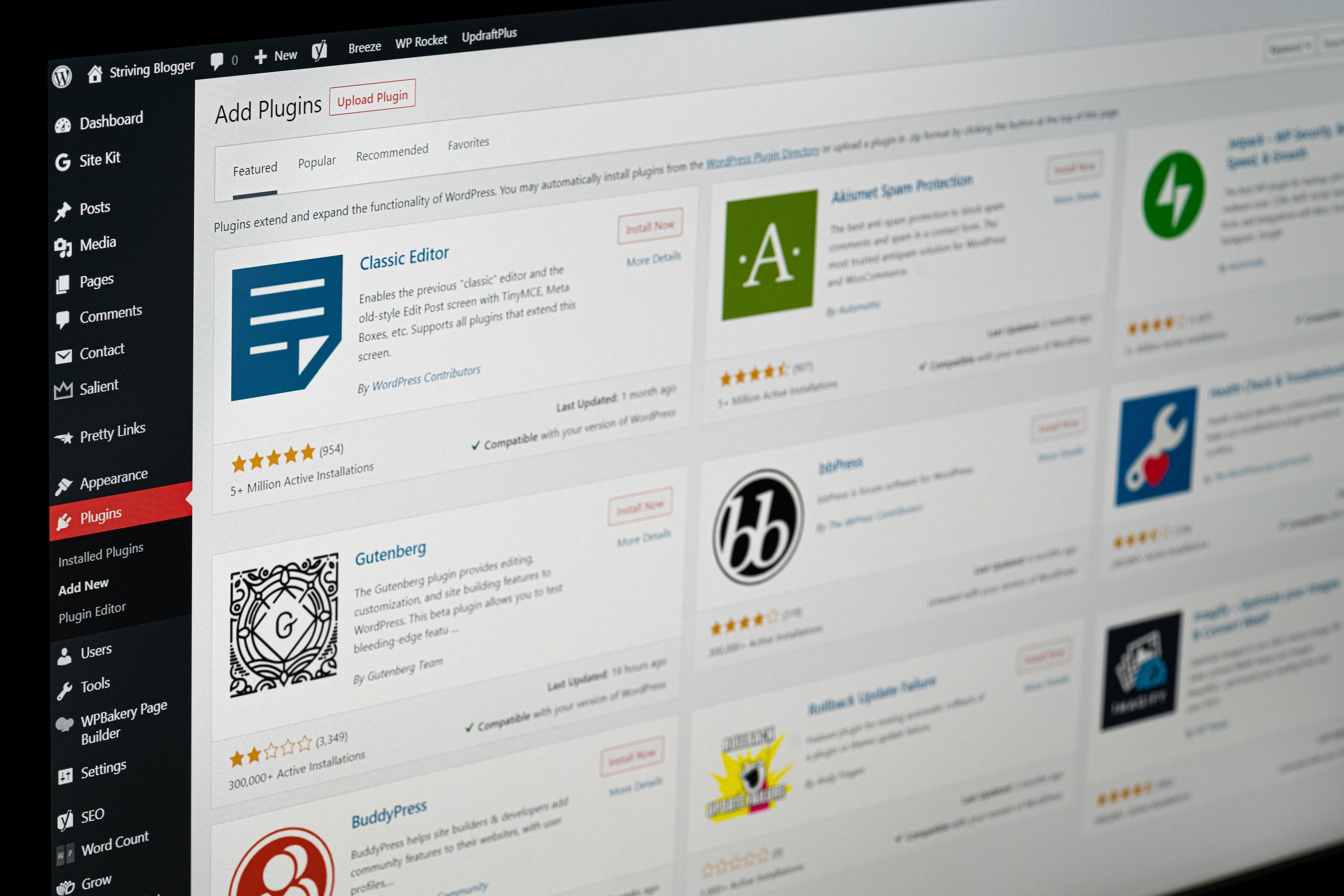Tips to Excel in Google’s AI-Driven Search Generative Experience

Search Generative Experience can be considered one of the most significant shifts in the 25-year history of Google search results. As we look ahead, there are many uncertainties, but one thing is clear: The AI-driven search experience is ushering in a new era of complexity when it comes to attracting visibility and traffic.
Beyond SGE, the SEO landscape undergoes constant upheaval, with Google’s relentless updates and algorithm shifts, prompting exhaustion in SEO professionals like Lily Ray. Success in this evolving environment requires mastery of current SEO dynamics, acknowledging the rise of zero-click searches and the intricate evolution of Search Engine Results Pages (SERPs).
Navigating SGE’s future involves drawing from existing search tactics. Industry studies suggest that securing top rankings in the current landscape enhances the chances of referral by Google’s SGE AI snapshot.
Yet, the challenge intensifies with the surge of AI in marketing. Future success hinges on surpassing AI-generated content, emphasizing the enduring relevance of search fundamentals. While the recipe undergoes slight changes, the ingredients remain familiar. Join us as we explore actionable tips to not merely adapt but excel in Google’s AI-Driven Search Generative Experience.
Get Mentioned Across the Web

If you want to improve your online presence and increase the likelihood that you will show up higher in Google search results, you must focus on building a strong online reputation. A crucial component of Google’s ranking algorithm is the existence of reliable sources mentioning or linking to your website. Google itself has stated in its documentation on Search Generative Experience (SGE) that corroborating its AI responses with reliable sources is a critical part of how it works. As a result, getting mentions or links from reliable websites can greatly increase the trustworthiness of your website and aid Google in judging the caliber of the content you offer.
The importance of links in search engine optimization (SEO) has been the subject of much debate and conjecture lately. Even though they are not the most significant component of SEO, links are still vital, according to Google employee and well-known SEO expert Gary Illyes. Illyes has stated that links are “important, but not as important as people think,” indicating that they are valuable and highly used signals for Google, but that their value is not to be overestimated. It is important to note that buying spammy links is not an effective or sustainable way to improve Google search optimization and that earning high-quality links through legitimate means is the key to earning popularity and relevance in search results.
Strategies to Effectively Leverage Data
Mistakes in content marketing often arise when marketers attempt to replicate existing content from competitors or industry leaders, expecting recognition from reputable publications. Unfortunately, this approach merely duplicates what already exists.
Shift your content marketing strategy to focus on creating genuinely helpful and engaging material for your audience. Consider scaling back content volume to prioritize quality over quantity, aiming to produce something distinct and superior to existing content. Explore formats like robust multi-chapter comprehensive guides enriched with rich media such as gifs, custom imagery, quizzes, and playable videos.
Alternatively, leverage unique assets, such as proprietary data, to distinguish your content. For instance, if you operate a high-end clothing boutique witnessing significant growth in gender-neutral clothing, share this trend. Similarly, as a reputable jewelry reseller, highlight intriguing insights like an increase in website inquiries for buying high-end watches post-economic recovery.
Following are some strategies that you can employ to leverage data effectively:
- Data Studies: Utilize internal or public data sets to create newsworthy, data-driven assets.
- Regional Data Rankings: Generate buzz at the city, state, or regional level with data ranking pieces.
- Contests and Sweepstakes: Offer value through sweepstakes and contests to generate public interest.
- Surveys: Use survey tools like Pollfish to collect unique data sets, setting your content apart.
Implementing these strategies emphasizes the significance of originality and data-driven approaches in creating standout content.
Create Content Featuring E-E-A-T

Google’s SGE documentation emphasizes a higher standard for generating responses, particularly for queries where information quality is crucial. The recent addition of “Experience” to Expertise, Authoritativeness, and Trustworthiness underscores the ongoing significance of this framework in content creation.
Let’s delve into the fundamentals, starting with author bios. Adobe, a brand prominent in SGE, exemplifies an advanced approach. Check out this page here, they intricately integrate the food photographer’s name into the page title, URL, and subheading. Additionally, they incorporate video interviews with Alex, delving into his approach to food photography, style, preferences, and intersperse inspirational quotes from him throughout the page.
This showcases an elevated utilization of user-generated content (UGC) that is not just helpful and inspirational but profoundly user-centric. The provision of downloadable photo editing presets created by Alex adds value, exemplifying a brand collaborating with an expert to craft authentic, high-value content.
For those uncertain about their standing in E-E-A-T factors compared to competitors, or those seeking improvement guidance, navigating the vast and subjective nature of E-E-A-T can be perplexing. A recommended strategy involves employing a grading rubric. Evaluate aspects like author bios, onsite reviews, and other factors contributing to E-E-A-T. Compare your grade against top competitors to identify gaps, creating a roadmap for areas where your strategy needs enhancement. This practical approach makes improving your E-E-A-T more tangible and actionable.
Cover Your Topics Thoroughly

To establish authority in specific domains, ensure comprehensive coverage of topics, addressing all user inquiries to demonstrate expertise. Analogous to hiring a general contractor, content strategies should encompass a holistic approach, proficient in all facets.
Long-tail keywords, vital in Google’s Search Generative Experience (SGE), gain significance as conversational searches surge. Head terms diminish in relevance, emphasizing the need to appreciate the growing importance of long-tail keywords. Dismissing queries based on search volume may impede reaching qualified audiences further down the funnel.
Illustrating a personal experience, SEO expert Neil Patel stated, “During a September international trip with my 8-month-old son, Google assisted in exploring various topics, such as the pros and cons of traveling with a car seat. Notably, Google referenced “Trips with Tykes” in AI snapshots, showcasing its effectiveness.”
Examining this example, “Trips with Tykes,” a modest site, excelled in Expertise, Authoritativeness, and Trustworthiness (E-A-T). The author’s extensive coverage of traveling with kids, particularly the detailed series on car seats, showcased the site’s value. This exemplifies that even smaller entities can achieve E-A-T success.
Furthermore, content optimization involves more than creating new material. Employ a framework: Reformat for improved readability, Refresh for targeted keyword alignment, Repurpose for diverse channels, Redirect to mitigate competition, and Retire underperforming content.
Leverage Content Formats That AI Hasn’t Nailed Yet

Utilizing captivating rich media formats can distinguish your content. Quizzes, infographics, and customized imagery offer valuable support, but video stands out prominently. Recognizing YouTube as one of the most significant global search engines, and considering SGE’s AI snapshots incorporating playable videos, leveraging video becomes an excellent opportunity for audience engagement. Moreover, it provides a chance to explore a content format not easily replicated by AI driven tools.
Generating video content provides a chance to capture more significant traffic volume. For instance, queries such as “how to teach my kid to ride a bike” show that YouTube search volume surpasses Google search volume by 80 times. Tools like AnswerThePublic or vidIQ can identify these advantageous queries, allowing you to integrate video to complement and enhance your text-based content strategy.
Optimize Your Conversion Rates and User Experience (UX)

Leveraging Search Generative Experience data in Google Search Console or third-party tools is integral for monitoring, measuring, and strategizing around website dynamics. However, the absence of such data makes these tasks challenging. Thus, allocating time and budget to aspects within your control, particularly user interactions on your website, is advisable.
Prioritize optimizing conversion rates and enhancing user experience (UX) preemptively. With the impending full rollout of SGE, a potential dip in traffic for numerous websites is anticipated. As SGE rises and long-tail queries increase, website traffic may evolve to be more qualified. Yet, if traffic volume diminishes significantly, it becomes imperative to provide an outstanding onsite experience, encouraging high conversion rates.
Mozilla’s experience showcases the impact of page speed on user engagement. A mere 2.2-second improvement resulted in a 15.4% rise in Firefox download figures, translating to an impressive 10 million additional downloads annually. Similarly, Walmart observed a 2 percent increase in conversion rates for every 1-second enhancement in page load times. These outcomes emphasize the substantial influence of performance optimization on revenue and conversions.
It’s not solely about page speed. We recommend adopting a continuous testing, tweaking, and improvement framework for the overall site experience and conversion path. Employ tools like Crazy Egg and VWO, that can help you achieve remarkable conversion rate improvements ranging from 25% to 230% for clients, spanning your small business to enterprises. If you haven’t initiated investments in optimizing traffic conversion and lack the tools or personnel for it, organizing these efforts now is crucial to mitigate potential traffic risks associated with SGE.
Benefits of Google’s AI-Driven Search Generative Experience

People’s interactions with search results are revolutionized by Google’s AI-Driven Search Generative Experience (SGE). Using generative AI, this novel method improves the search experience and provides a number of significant advantages.
1. Enhanced Search Relevance
SGE leverages advanced generative AI models like Gemini to understand user queries more comprehensively. This leads to more accurate and contextually relevant search results. The AI’s ability to grasp nuanced language nuances contributes to a more refined understanding of user intent, delivering results that align closely with what users are seeking.
2. Learning as You Search
One of the prominent features of SGE is its capability to facilitate learning while searching. Through updates that enhance the learning experience, users can gain insights and understand key concepts more easily as they explore search results. This dynamic learning feature makes the search process not just informative but also educational.
3. Generative AI-Powered Overviews
SGE offers AI-powered overviews that assist users in quickly grasping the key points of a web page. This feature streamlines the process of information consumption, providing users with concise summaries that aid in decision-making regarding the relevance and importance of a particular page.
4. Interactive Search Experience
The search experience is made more engaging with interactive content forms like polls, quizzes, and interactive infographics to SGE. Direct user interaction with search results adds dynamism and interactivity to the exploring process.
5. Visual Content Understanding
While traditional search engines may struggle to fully comprehend visual content, SGE excels in understanding the nuances of visual information. This is particularly evident in video content, where SGE can provide valuable insights even when the context is complex.
6. AI-Powered Recommendations
SGE provides context-aware, personalized suggestions by leveraging generative AI. Individual demands cater to the search experience through the understanding of user preferences and behavior. This makes things more user-centric and improves usability and enjoyment.
7. Mobile Optimization Emphasis
With Google emphasizing mobile-first indexing, SGE ensures a prioritized and seamless experience on mobile devices. This emphasis is on the fact that mobile optimization is in line with changing user habits.
8. Continuous Improvement Through User Feedback
SGE actively incorporates user feedback into its learning algorithms. This iterative process ensures that the AI evolves based on user interactions and preferences. It leads to continuous improvements in search result relevance and user satisfaction.
9. Long-Tail Query Understanding
SGE demonstrates proficiency in understanding and addressing long-tail queries. This is particularly beneficial for users who express their search intent through more detailed and specific queries. The AI’s ability to comprehend the nuances of language aids in providing accurate and valuable results for such queries.
10. Comprehensive Content Exploration
The emphasis on long-form content and semantic search integration allows users to delve deeply into topics of interest. SGE encourages comprehensive exploration by providing in-depth coverage of subjects, catering to users seeking detailed and nuanced information.
Google’s AI-Driven Search Generative Experience brings forth a host of benefits, ranging from enhanced learning features to interactive content exploration. This transformative approach to search signifies a significant step forward in leveraging generative AI driven tools for an improved and more user-centric search experience.
Frequently Asked Questions About Google SGE
1) What is Google’s SGE?
Google’s SGE, or Search Generative Experience, is an experimental search feature introduced in Search Labs. It represents a novel approach to search results by incorporating generative AI to enhance the user experience. The SGE aims to provide high-quality, dynamic, and interactive search results, offering users more than traditional static listings.
Launched as an experiment, SGE leverages generative AI to present results with a focus on user engagement and comprehension. It introduces features such as AI-powered overviews, interactive content formats, and learning capabilities. The intention is to give users a more pleasurable and informative search experience.
2) When is SGE fully rolling out?
As of the available information, there isn’t a clear indication of the exact date for the full rollout of SGE. The experiment in Search Labs was initially expected to “end” in December 2023. However, further details about the broader rollout timeline remain unspecified.
3) Who has access to Google’s SGE?
Google has expanded access to its Search Generative Experience (SGE) in Search Labs to more users. Initially, the access was limited. However, as of the latest information, the expansion includes teenagers aged 13-17 in the United States. This alows them to benefit from this experimental generative AI search experience.
Additionally, the opening up of access is not restricted to a specific demographic. The goal here is to make SGE available to a broader audience, enabling more users to explore this innovative feature.
4) Does Google have official documentation about SGE?
Yes! Google provides detailed and authoritative documentation for SGE. This is incredibly useful for anyone looking to gain a deeper understanding of how it functions.
5) Are clickable website cards here to stay within the AI snapshots?
As of the information available, clickable website cards within the AI snapshots are part of Google’s Search Generative Experience experiment. The AI snapshot carousel features clickable cards with content from industry leaders, providing users with additional information from experts. However, SGE’s experimental clickable website cards’ permanence hinges on ongoing testing and user feedback for confirmation. Google is continually refining its search experiences. Therefore, the future status of clickable website cards in AI snapshots may evolve based on the outcomes of the experiment.
6) What proportion of queries result in SGE AI snapshots?
Although exact statistics are unavailable, recent industry studies reveal that sample sets of keywords yield about 25% of snapshots that can be generated instantly and roughly 40% of snapshots that are automatically generated.
7) Are the products shown in the new SGE “vertical experience” from paid ads?
No, these are organic listings that include helpful product summaries from reviews and possibly other online sources.
8) What are the different features of SGE?
The Search Generative Experience (SGE) incorporates various features to enhance the user search and browsing experience:
- AI-Generated Information Snapshots: SGE provides AI-generated information snapshots in search results, offering users quick overviews of key points within articles.
- Learn as You Search: SGE introduces features focused on education, allowing users to learn as they search. This includes AI-powered tools to assist in learning and acquiring new knowledge.
- Product Visibility and Conversions Boost: Google has rolled out new AI features in SGE aimed at boosting product visibility and conversions. These capabilities are designed to enhance the visibility of products in search results.
- SGE While Browsing: Users can benefit from generative AI-powered tools while browsing web pages. SGE while browsing allows quick identification of key points on freely available articles.
It is advised to consult official Google documents or announcements regarding SGE for more thorough and recent information.
9) Does ranking well on the traditional SERP help improve your chances of ranking in the AI snapshot?
Yes, ranking well on the SERP can impact your chances of ranking in the AI snapshot generated by the SGE. The AI-powered snapshots provided by SGE often feature content from the traditional SERP’s top-ranking results. High-performing content in standard search may also feature in the AI-generated snapshot atop SERP.
Traditional SEO boosts content selection in SGE snapshots, reinforcing the link between traditional and snapshot optimization. However, it’s essential to adapt strategies to both traditional Google search optimization and optimization for AI-generated experiences to maximize visibility.
Wrapping it Up!
Google’s new AI-powered search engine, Search Generative Experience, has caused some confusion and concern. It makes sense to be wary, cynical, and even afraid of the changes it brings about. You can equip yourself for the uncertain nature of the search environment by adhering to a few basic guidelines.
Prioritizing the creation of thorough, original, and high-quality content within your niche is essential for SEO success. You can get useful mentions and links from other websites by establishing yourself as an authority on related subjects. These will continue to improve your SEO performance. Think about including several formats in your content to make your material stand out in a sea of AI-generated content.
Optimizing your website experience is also crucial if you want to make sure that it’s user-friendly and offers your audience useful tools. Gaining control over the things you can influence will put you in a stronger position to succeed in the constantly changing field of Google search optimization.









